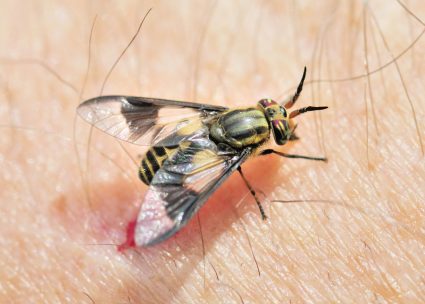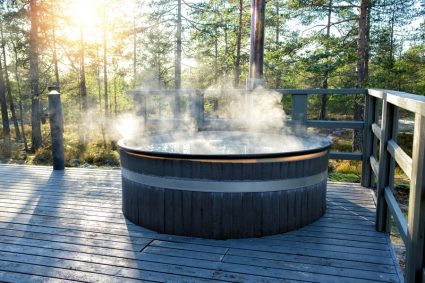
Triclopyr is a selective herbicide primarily used to control woody plants and broadleaf weeds. It’s known to be effective while leaving grasses and conifers largely unaffected. However, the question remains, does Triclopyr kill grass? The short answer is, it depends on the type of grass.
Triclopyr is a selective herbicide that primarily targets woody plants and broadleaf weeds, and typically does not kill grass. However, it can cause injury to certain warm-season grasses like Bermuda grass, Zoysia, and St. Augustine if not used appropriately. Cool-season grasses such as fescue, bluegrass, and ryegrass are generally less sensitive to Triclopyr. Always follow the label instructions and use the herbicide sparingly to avoid potential damage.
What is Triclopyr?
Triclopyr is an organic compound in the pyridine group. It’s a systemic foliar herbicide and fungicide, meaning it’s absorbed by the plant leaves and roots and transported to the growing points of the plant. It works by mimicking the plant growth hormone auxin, causing uncontrolled plant growth and eventually leading to plant death.
In the United States, it’s sold under trade names such as Garlon, Remedy, and several others. In the UK, it’s sold as SBK Brushwood Killer. Its primary use is in various settings, including rights-of-way, industrial areas, forestry, railways, rangeland, and home gardens.
Triclopyr and Grass
Triclopyr is not typically harmful to grasses at recommended rates. It’s effective in controlling broadleaf weeds without damaging desirable turfgrass species. However, it can cause injury to some warm-season grasses, such as Bermuda grass, Zoysia, and St. Augustine. Cool-season grasses, like fescue, bluegrass, and ryegrass, are generally less sensitive to Triclopyr.
The concentration of Triclopyr required to kill grass depends on the specific grass type and application method. For spot spraying, it’s suggested to use 1/2 oz to 1 oz of Triclopyr per gallon of water in a backpack sprayer. For woody plants, as a foliage treatment, use 4 to 8 quarts of product per 5 gallons of water per acre.
Environmental Impacts and Risks
Triclopyr can cause injury to certain types of grass, like bermudagrass lawns and other stoloniferous turfgrass. It’s moderately persistent in soil, with an estimated half-life of 30-90 days, though it has been shown to persist for over a year in some cases. It can enter waterways via aerial drift and inadvertent overspray. However, studies have found that Triclopyr poses little risk for non-target organisms or downstream water users.
To minimize the risks associated with Triclopyr use, it’s essential to follow the recommended application rates and guidelines. New spray drift management requirements and reduced application rates can help minimize potential damage to non-target plants.
Precautions When Using Triclopyr
When using Triclopyr, always read and follow the label instructions, wear appropriate personal protective equipment (PPE), apply it when wind speeds are low to prevent drift, and monitor grass sensitivity.
Alternatives to Triclopyr
There are several effective alternatives to Triclopyr for killing grass. Some of these alternatives include Diquat, Pelargonic acid, Glufosinate, Vinegar, Botanical oils, and Citric acid.
Is Triclopyr Safe for Pets?
Triclopyr is generally considered safe for use around pets when applied according to the label instructions. However, it’s important to keep pets and people away from the treated area while the product is being applied. Once the treated area has fully dried, it’s safe for everyone to return.
In conclusion, Triclopyr does not generally kill grass but can cause injury to certain grass species. It’s important to follow the label instructions and use the herbicide sparingly to avoid damaging non-target grass species.
Frequently Asked Questions
Can Triclopyr be used in residential areas?
Yes, Triclopyr can be used in residential areas, including home gardens. However, it’s crucial to follow the label instructions to avoid damaging non-target plants and potential environmental risks.
How soon after applying Triclopyr can pets return to the treated area?
Pets can return to the treated area once it has fully dried after the application of Triclopyr. This typically takes a few hours, but it’s best to check the product label for specific instructions.
Is Triclopyr harmful to humans?
Triclopyr is generally safe for humans when used according to the label instructions. However, it’s recommended to wear appropriate personal protective equipment (PPE) during the application to avoid potential exposure.
Can Triclopyr be used for killing other types of weeds?
Yes, Triclopyr is primarily used to control woody plants and broadleaf weeds. It’s effective against a wide range of weeds, but it’s always best to check the product label for specific weed types.
How long does Triclopyr stay active in the soil?
Triclopyr is moderately persistent in soil, with an estimated half-life of 30-90 days. However, in some cases, it has been shown to persist for over a year.











